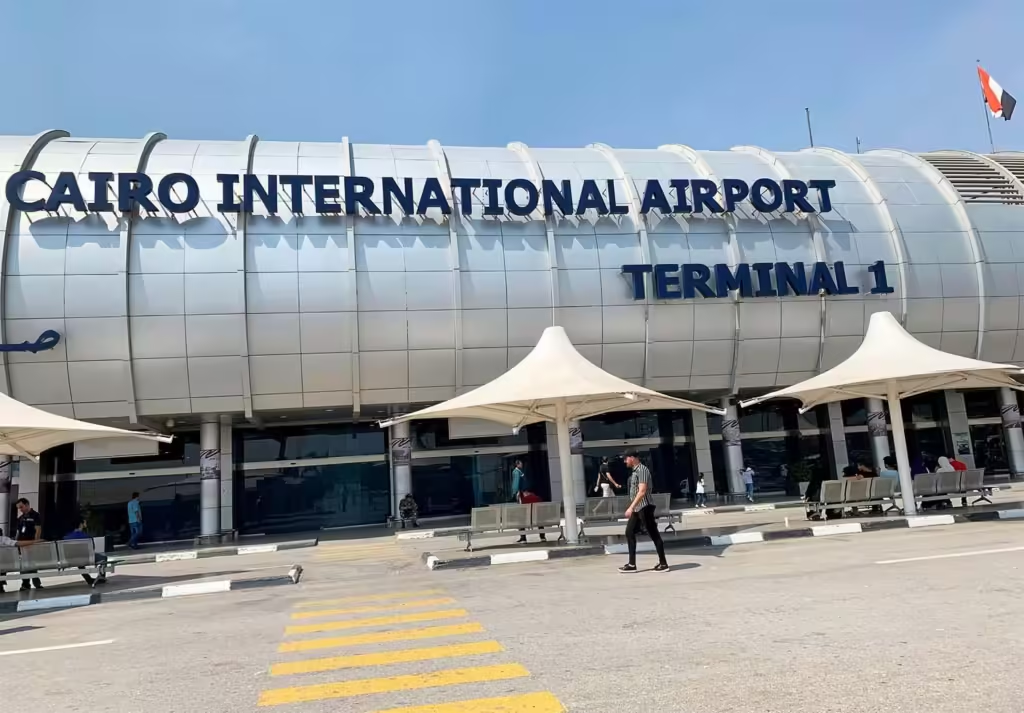As the world’s second-largest continent, Africa boasts a rapidly growing aviation sector that connects its vast landscapes to the rest of the world. With millions of passengers traveling for business, tourism, and trade, African airports are stepping up to meet global standards. Below are the largest airports across the continent, ranked by size, passenger traffic, and strategic significance.
Contents
- 1. O.R. Tambo International Airport (Johannesburg, South Africa)
- 2. Cairo International Airport (Cairo, Egypt)
- 3. Cape Town International Airport (Cape Town, South Africa)
- 4. Addis Ababa Bole International Airport (Addis Ababa, Ethiopia)
- 5. Murtala Muhammed International Airport (Lagos, Nigeria)
- 6. Mohammed V International Airport (Casablanca, Morocco)
- 7. Jomo Kenyatta International Airport (Nairobi, Kenya)
- 8. Algiers Houari Boumediene Airport (Algiers, Algeria)
- 9. King Shaka International Airport (Durban, South Africa)
- 10. Entebbe International Airport (Entebbe, Uganda)
1. O.R. Tambo International Airport (Johannesburg, South Africa)
- Location: Johannesburg, South Africa
- Passenger Traffic: Over 20 million annually
- Key Features:
- Africa’s busiest airport.
- Named after Oliver Reginald Tambo, a prominent anti-apartheid politician.
- Serves as the primary hub for South African Airways.
- Features six terminals: two international, two domestic, and two transit areas.
O.R. Tambo International Airport is the crown jewel of Africa’s aviation industry. Located in Johannesburg, South Africa’s largest city, it’s a critical hub for flights connecting the continent to Europe, Asia, and the Americas. The airport’s facilities include world-class lounges, extensive duty-free shopping, and advanced cargo handling services. With ongoing upgrades, O.R. Tambo continues to set the benchmark for African aviation.
2. Cairo International Airport (Cairo, Egypt)

- Location: Cairo, Egypt
- Passenger Traffic: Approximately 17 million annually
- Key Features:
- Strategic gateway between Africa, Europe, and the Middle East.
- Three passenger terminals with modern amenities.
- A dedicated cargo village for freight services.
Situated in Egypt’s capital, Cairo International Airport is a major hub for both passenger and cargo flights. The airport plays a pivotal role in connecting North Africa to the rest of the world. Its three terminals are equipped with amenities such as VIP lounges, restaurants, and efficient check-in systems. Cairo’s proximity to historic landmarks like the Pyramids of Giza adds to its appeal as a travel destination.
3. Cape Town International Airport (Cape Town, South Africa)

- Location: Cape Town, South Africa
- Passenger Traffic: Over 11 million annually
- Key Features:
- Africa’s second busiest airport by passenger traffic.
- Award-winning design and functionality.
- Close proximity to Cape Town’s world-famous tourist attractions.
Cape Town International Airport is celebrated for its architectural design and efficiency. As a key entry point for tourists visiting South Africa, the airport features modern terminals, extensive retail options, and excellent transportation links to the city center. It’s also renowned for its eco-friendly initiatives, including energy-efficient buildings and sustainable waste management systems.
4. Addis Ababa Bole International Airport (Addis Ababa, Ethiopia)

- Location: Addis Ababa, Ethiopia
- Passenger Traffic: Over 12 million annually
- Key Features:
- The primary hub for Ethiopian Airlines, Africa’s largest carrier.
- A new passenger terminal inaugurated in 2020, doubling its capacity.
- Serves as a transit hub for flights connecting Africa to Asia and Europe.
Addis Ababa Bole International Airport has emerged as one of Africa’s busiest and most important aviation hubs. The airport’s recent expansion includes state-of-the-art facilities, additional boarding gates, and a luxurious VIP terminal. Its strategic location in Ethiopia’s capital makes it a vital gateway for international travelers and a key player in global aviation networks.
5. Murtala Muhammed International Airport (Lagos, Nigeria)

- Location: Lagos, Nigeria
- Passenger Traffic: Nearly 8 million annually
- Key Features:
- The busiest airport in West Africa.
- Recent upgrades to terminals and runways.
- A critical hub for business and trade in Nigeria.
Named after Nigeria’s former military head of state, Murtala Muhammed International Airport is the heartbeat of West African aviation. Located in Lagos, Nigeria’s largest city, the airport is undergoing significant modernization to accommodate growing passenger numbers. Its importance as a hub for regional and international flights cannot be overstated, given Nigeria’s status as Africa’s largest economy.
6. Mohammed V International Airport (Casablanca, Morocco)

- Location: Casablanca, Morocco
- Passenger Traffic: Over 10 million annually
- Key Features:
- Morocco’s busiest airport.
- A major hub for Royal Air Maroc.
- Well-connected to Europe, the Americas, and the Middle East.
Mohammed V International Airport serves as Morocco’s primary gateway to the world. Located in Casablanca, the country’s economic capital, the airport is a hub for both passenger and cargo flights. Its modern terminals feature comfortable lounges, dining options, and efficient security systems. The airport’s role in boosting Morocco’s tourism and trade sectors is significant.
7. Jomo Kenyatta International Airport (Nairobi, Kenya)

- Location: Nairobi, Kenya
- Passenger Traffic: Approximately 7 million annually
- Key Features:
- The largest and busiest airport in East Africa.
- Ongoing expansions to increase capacity and improve facilities.
- A key hub for Kenya Airways and other regional carriers.
Jomo Kenyatta International Airport is the pride of East Africa’s aviation industry. Located in Nairobi, it’s a major hub for travelers visiting Kenya’s famous wildlife reserves and national parks. Recent expansions include a modern terminal for international flights and upgraded infrastructure to handle larger passenger volumes. The airport’s strategic location makes it a critical link in Africa’s aviation network.
8. Algiers Houari Boumediene Airport (Algiers, Algeria)

- Location: Algiers, Algeria
- Passenger Traffic: Approximately 6.5 million annually
- Key Features:
- A key hub for North African travel.
- Modern terminals with advanced amenities.
- Proximity to Algiers’ business and cultural districts.
Algiers Houari Boumediene Airport is Algeria’s main international gateway. The airport’s modern terminals are designed to handle growing passenger traffic, with features such as spacious lounges, efficient baggage systems, and a variety of retail outlets. Its location in Algiers makes it a convenient choice for travelers exploring North Africa.
9. King Shaka International Airport (Durban, South Africa)

- Location: Durban, South Africa
- Passenger Traffic: Over 5 million annually
- Key Features:
- State-of-the-art facilities.Close proximity to Durban’s beaches and business hubs.
- A key player in South Africa’s aviation sector.
King Shaka International Airport, named after the legendary Zulu king, is a modern facility located in Durban. Its strategic location and advanced infrastructure make it an important hub for domestic and international flights. The airport’s emphasis on sustainability and passenger comfort has earned it praise from travelers.
10. Entebbe International Airport (Entebbe, Uganda)

- Location: Entebbe, Uganda
- Passenger Traffic: Nearly 2 million annually
- Key Features:
- Uganda’s largest airport.Ongoing upgrades to accommodate increased traffic.
- Proximity to Lake Victoria and Uganda’s capital, Kampala.
Entebbe International Airport is Uganda’s primary aviation gateway. Located near the shores of Lake Victoria, the airport offers stunning views and easy access to the capital city, Kampala. Recent upgrades include expanded terminals, improved security systems, and additional parking areas, positioning Entebbe as a growing hub for East African travel.
Africa’s rising aviation sector
The largest airports in Africa are more than just transportation hubs; they’re symbols of the continent’s growth and connectivity. With ongoing investments in infrastructure, technology, and sustainability, these airports are poised to meet the demands of a rapidly expanding aviation market. As Africa’s economies continue to grow, its airports will play an increasingly vital role in connecting people, goods, and cultures across the globe.






